
A NEAR PRODUCTION BUGATTI CHIRON PROTOTYPE REACHES 304.773 MPH FOR THE FIRST TIME. WORLD RECORD!
Bugatti is the first manufacturer to break the 300-mile-an-hour barrier. On a test track in Germany, a near production prototype derivative of the hyper sports car Chiron1 surpassed the magic limit with a speed of 304.773 mph (490.484 km/h). A world record.
“What a record! We’re overjoyed to be the first manufacturer ever to have achieved a speed of more than 300 miles per hour. It’s a milestone for eternity. I would like to thank the whole team and driver Andy Wallace for this outstanding performance,” says Stephan Winkelmann, President of Bugatti.
BUGATTI WORLD RECORD – LOWER SAXONY VERSUS NEVADA
Record attempts depend not just on performance but on location, too
Molsheim, 4 September 2019. Bugatti was the first manufacturer ever to break the 300-mile-per hour barrier with a pre-production vehicle of a new Chiron1derivative. Achieving a speed of 304.773 mph (490.484 km/h), it was test driver Andy Wallace who secured a place for himself in the record books.
“With this record, Bugatti has once again shown what we are capable of – despite the enormous hurdles,” says Stephan Winkelmann, President of Bugatti. “After all, we’re not just the first manufacturer to produce a car that goes faster than 300 miles per hour – at 304.773 mph (490.484 km/h). We also did this on a test track that has a major drawback when it comes to speed tests.”
There are four crucial factors when it comes to making a record attempt: the vehicle, the track, the location and the weather. “All four have to be right and perfectly prepared so that everything is coordinated. The only thing we can’t influence is the weather,” says Stefan Ellrott, Head of Development at Bugatti.
Highest safety standards in Ehra-Lessien
With so much power, maximum safety must be ensured. The Ehra-Lessien high-speed track in Lower Saxony is the only place in the world where such high safety standards are applied to record attempts. The 21-kilometre three-lane high-speed track is lined with crash barriers, and rescue services are available at the north and south ends. Special mats are used to clean the carriageway before each test. “Safety is our top priority. We did everything we could in advance to minimise the risk to our test driver,” says Stefan Ellrott.
But Bugatti had to accept one major drawback: the test track in Ehra-Lessien is 50 metres above sea level. Unlike higher-altitude locations used for high-speed runs in the pastsuch as in Nevada, the higher air density of 1013.25 hPa is almost the same as at sea level.
The higher the track, the lower the aerodynamic drag
As the distance from sea level increases, the air becomes thinner and the number of molecules in the air per unit volume decreases. The reason for this is the air pressure gradient in the atmosphere, because the upper air layer masses act on the lower air layer masses. The molecules of the lower air are compressed more than in the higher-altitude air, so the pressure is higher. The air pressure drops by about 1 hPa every 8 metres: at 1,000 metres it is only about 88 percent of what it is at sea level, approx. 890 hPa. An exact mathematical description of the pressure curve is not possible, however, due to weather dynamics and other factors.
As air pressure and air density decrease, so does aerodynamic drag. Objects such as cars, airships or aircraft require less power. At an altitude of 5,000 metres, the density drops by about half, thereby halving the drag. To put it simply, the car has to apply more force at sea level to drive through the air than if it were travelling at an altitude of around 1,000 metres.
This direct correlation between air density and resistance results from the relationship between the drag coefficient – i.e. the drag reduced along with dynamic pressure – and the Reynolds number. This Reynolds number, which represents the ratio between inertial and frictional forces, characterises the flow field and thus also the force field acting on the vehicle. If the Reynolds number is very high, the drag coefficient does not change. As a result of the change in air density with altitude, the Reynolds number decreases almost proportionally to density. This means that since the density at an altitude of 1,000 metres has decreased by about 10 percent as compared to sea level, the Reynolds number is also subject to a 10 percent reduction. “However, this reduced Reynolds number is still so high that the drag coefficient does not change compared to what it is at sea level. Since the dynamic pressure is again proportional to density, the drag force at an altitude of 1,000 metres is about 10 percent lower than at sea level,” says Professor Dr. Wolfgang Schröder, Head of the Institute of Aerodynamics at RWTH Aachen University. At a speed of around 300 mph or 500 km/h, the Reynolds number increases in linear fashion with speed; in the case of an increase from 400 km/h to 500 km/h it increases by 5/4. At speeds in the range of 300 mph, the compressibility of the fluid also plays a role, something that tends to be negligible at lower speeds.
On the other hand, the influence of gravity is no longer relevant. However, it is negligible that the oxygen content in the air – important for the combustion of fuel in the engine – is also reduced from 21 to around 19 percent: perfectly tuned turbochargers press more air into the combustion chambers.
“Our calculations have shown that we would have been around 25 km/h faster in Nevada,” says Stefan Ellrott. But Bugatti decided against this option nonetheless. “Safety comes first at Bugatti. The route in Nevada is very long and only goes in one direction: security forces would have taken too long to get to the scene in an emergency. In addition, the track has a slight gradient of about three percent. It wouldn’t have felt right to set a record there.”
But Bugatti set this world record in spite of the less favourable air pressure conditions. An enduring achievement. With this new world record, Bugatti will also withdraw from the competition to produce the fastest serial production cars. “We have shown several times that we build the fastest cars in the world. In future we shall be focusing on other exciting projects,” says Winkelmann.
1 Fuel consumption, l/100km: urban 35.2 / extra-urban 15.2 / combined 22.5; combined CO2 emissions, g/km: 516; efficiency class: G
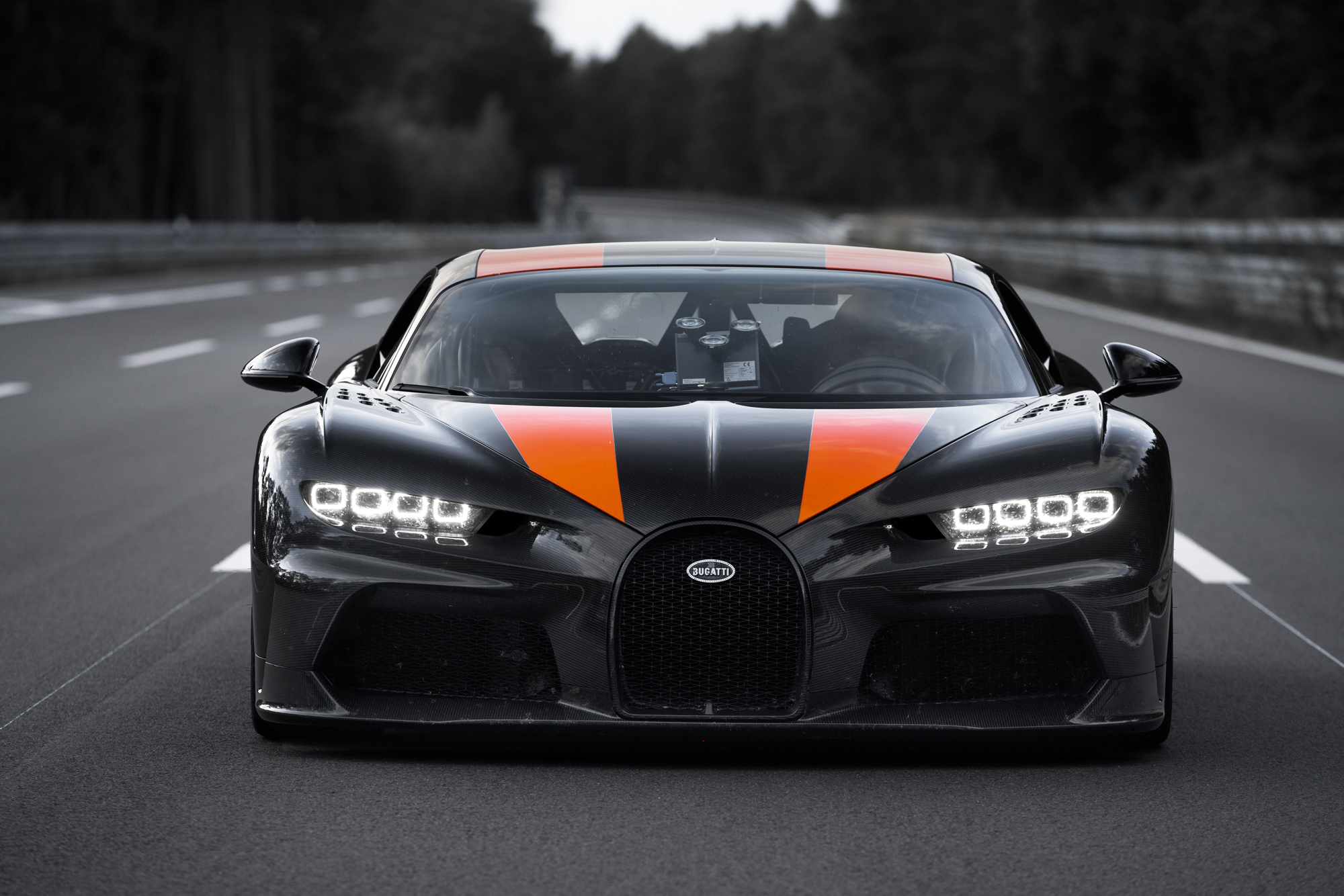
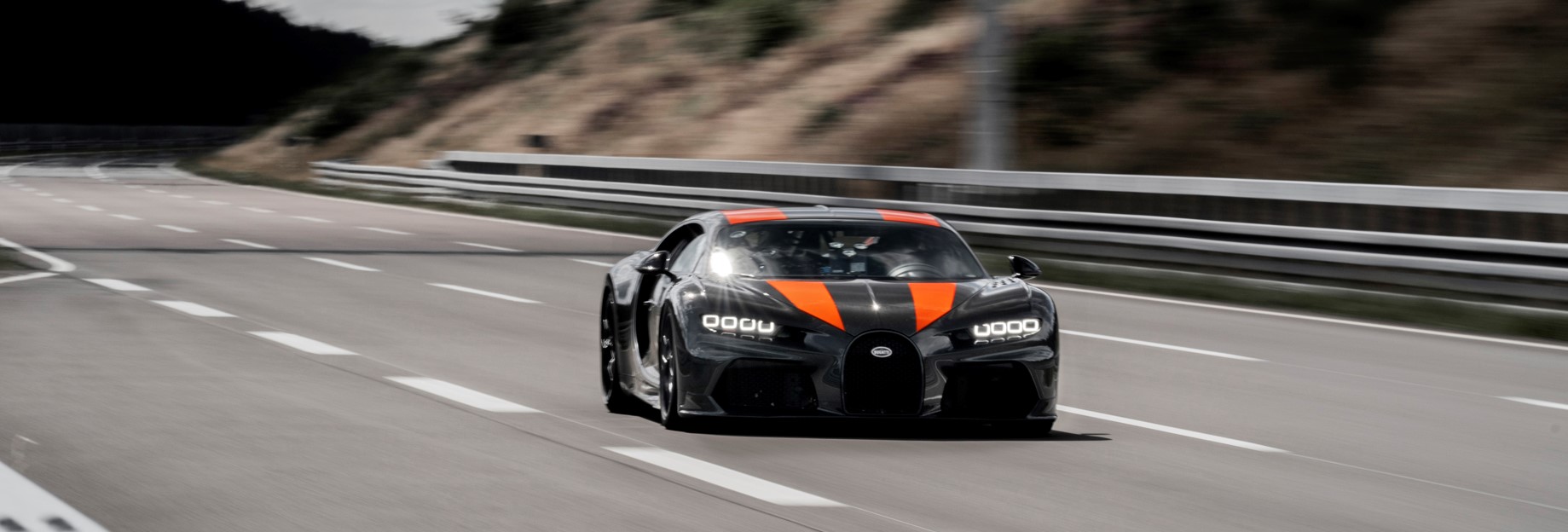
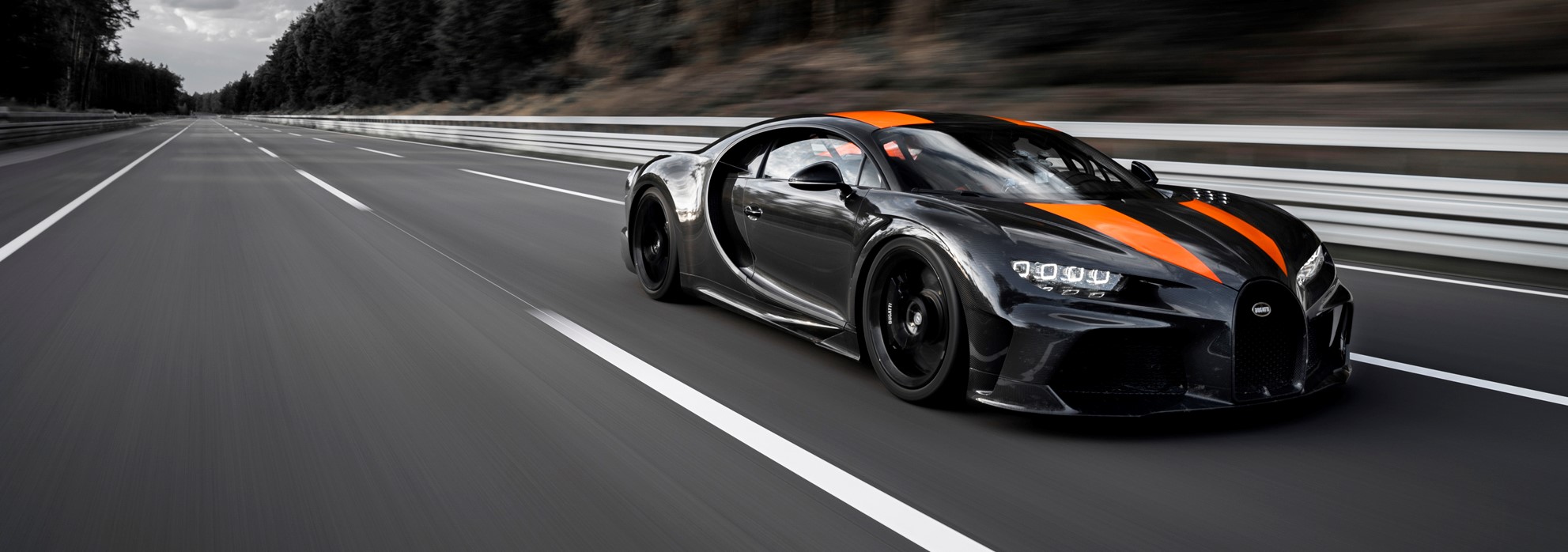


BUGATTI CHIRON SUPER SPORT 300+ – A GIFT TO CELEBRATE THE RECORD
Bugatti celebrates 110 years in Molsheim, showcasing the new edition model Super Sport 300+
Molsheim, 9 September 2019. Nobody is faster. Just a few weeks after the sensational record-breaking run undertaken by Bugatti – when for the first time a hyper sports car drove faster than 300 miles per hour – the French brand is showcasing a very special edition based on this new Chiron1 derivative: the Bugatti Chiron Super Sport 300+*.
Last Saturday evening, Bugatti presented the new model to a selected group of customers as the highlight of the celebrations to mark the 110th anniversary of the tradition-steeped company in Molsheim. The Chiron Super Sport 300+ played a very special role among numerous historic Bugatti models and the current Bugatti hyper sports cars of modern times, such as the Divo2, La Voiture Noire3 and the Centodieci4.
Chiron Super Sport 300+ – the fastest Bugatti
The special edition Chiron Super Sport 300+, limited to 30 units, is visually based on the record-breaking car. A few weeks ago, it became the first series-production car to break the magical 300-miles-per-hour barrier. Achieving a speed of exactly 304.773 mph (490.484 km/h), it is now the fastest production hyper sports car ever. But not only that: With an output of 1,176 kW/1,600 hp, the Chiron Super Sport 300+ exceeds the Chiron by 100 hp.
“After the incredible speed record of more than 300 miles per hour, which we were the first series manufacturer to achieve, we’re now offering our customers the Super Sport 300+ – a very special edition model and the fastest Bugatti ever”, says Stephan Winkelmann, President of Bugatti. “But the Chiron Super Sport 300+ is more than just the fastest series-production sports car in the world. It is a testimony to Bugatti’s technical refinement, masterly workmanship and enormous attention to detail.”
Aerodynamically optimised bodywork
The Chiron Super Sport 300+ is visually distinct from the Chiron, not least due to its extended and aerodynamically optimised body, which is designed for extremely high-speed travel beyond 420 km/h. The Air Curtains installed at the car’s front corners guide excess pressure developing at the front air inlets towards the sides of the hyper sports car. At the same time, air outlets on the wheel arch and directly behind the front wheels dissipate excess pressure from the wheel arch, creating a slight amount of negative lift at the front to reduce the drag. Modifications are also very prominent at the rear. The longer rear end, the so-called Longtail, allows the laminar flow to pass over the vehicle for longer to thus reduce the aerodynamic stall by over 40 percent. Thanks to a modified exhaust tailpipe configuration, the diffuser in the centre of the rear end can almost generate a sufficient amount of negative lift by itself, meaning that the wing can consequently remain retracted in Top Speed mode. As a result, the drag at the rear has been improved even more as negative lift generated by wings and spoilers would otherwise contribute to the drag.
The body is made of exposed, jet-black carbon fibre set through in the centre with racing stripes in Jet Orange. The black engine cover is made of carbon, as is the windscreen wiper. At the front you can recognise the special model by the Bugatti “Macaron” logo made of genuine silver and black enamel. The extremely light magnesium wheels are finished in “Nocturne”, as are all trim parts. Passengers are welcomed with the lettering “Super Sport 300 +” in LED lighting at the door opening.
The interior is dominated by black carbon, leather and Alcantara in Beluga Black, complemented by colour highlights in Jet Orange. On the carbon door sills, the exclusive lettering likewise radiates in this colour, as do the headrests, the knee support in the centre console and the fine double-stitched seams. All interior trim parts on the other hand have a black anodised finish, while the rear-view mirror and centre line are painted in Beluga Black.
“With the Super Sport 300+ we pay homage not just to our glorious history with its numerous speed records but also to the performance of the entire record-breaking team. They were the ones who tackled the challenge of driving over 300 miles per hour,” says Stephan Winkelmann, President of Bugatti. “For this reason, the Super Sport 300+ is more than just an edition. It is by far the fastest luxury hyper sports car in the world and a genuine Bugatti in every fibre of its being – uncompromisingly beautiful, fast, comfortable and exquisite.”
The Super Sport 300+ was showcased on Saturday evening as the grand finale of the Grand Tour, a rally that takes in the most important stages in the life of Ettore Bugatti – from Milan via Monaco and Paris to Molsheim in Alsace. The first vehicles of the limited edition model Super Sport 300+, restricted to 30 units, will be delivered to customers at a net unit price of 3.5 million euros in mid-2021.
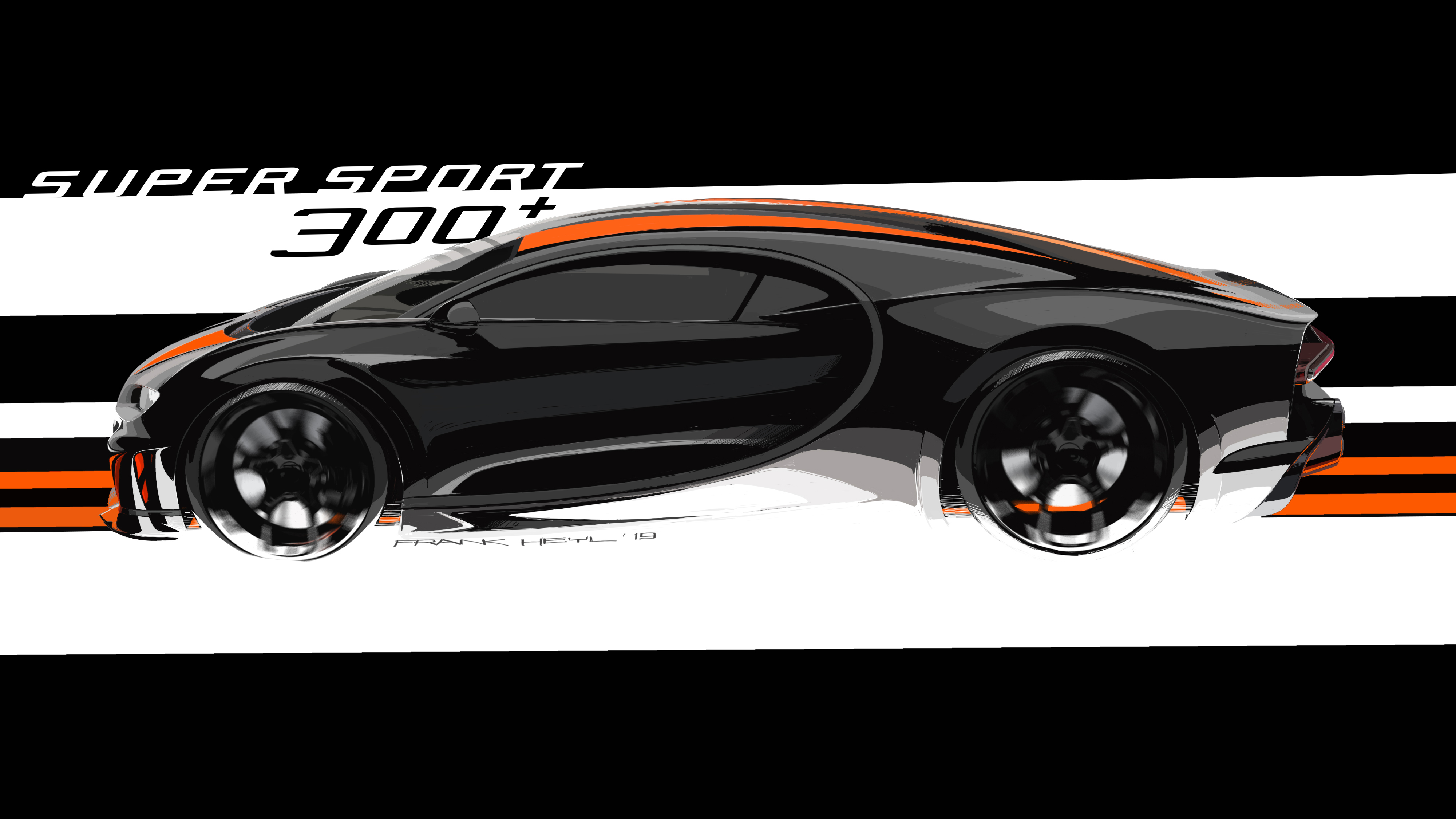
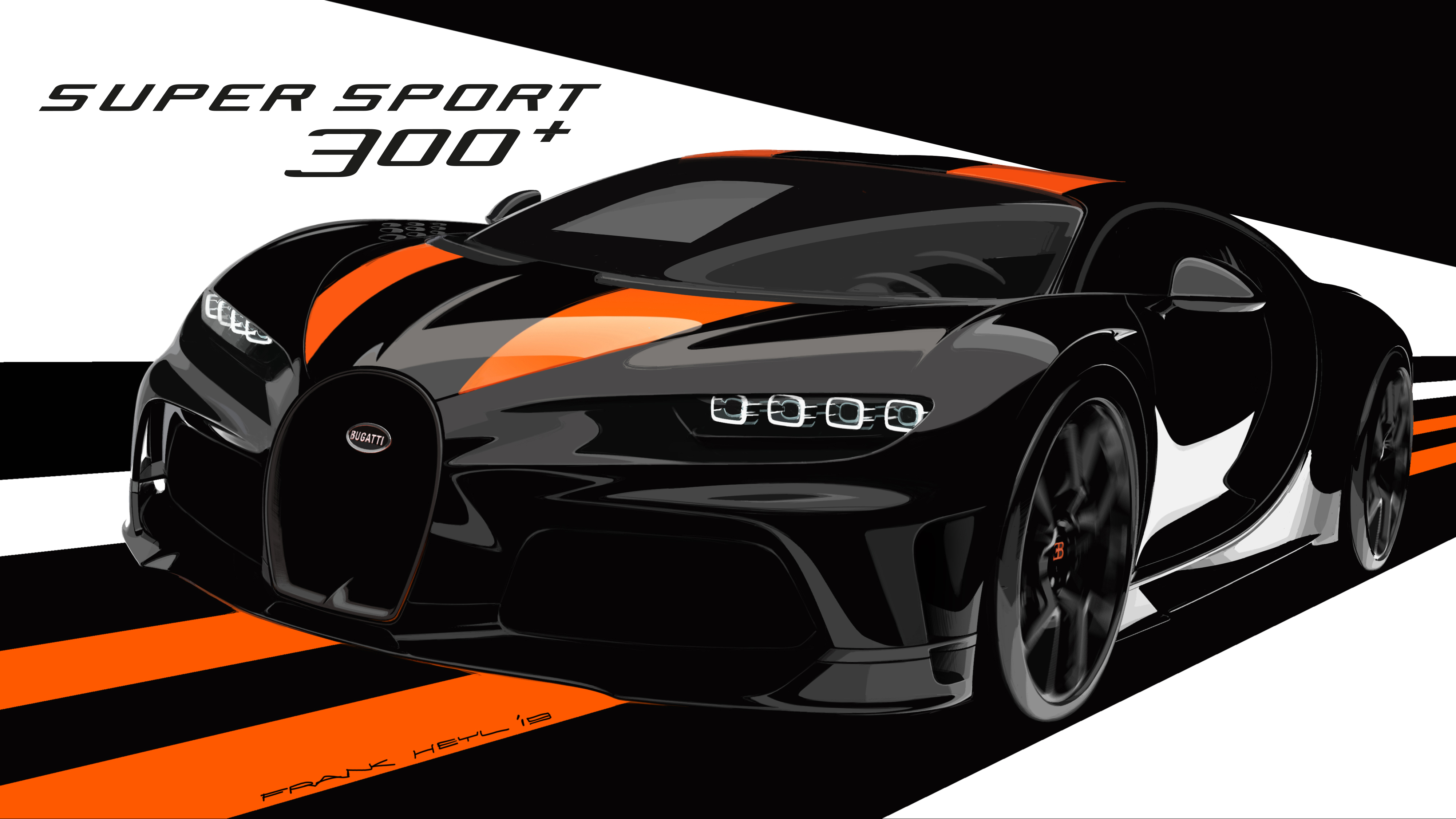


1 CHIRON:
Fuel consumption, l/100km: urban 35.2 / extra urban 15.2 / combined 22.5; CO2 emissions (combined), g/km: 516; efficiency class: G*
2 DIVO:
This model is not subject to Directive 1999/94/EC, as type approval has not yet been granted.
3 LA VOITURE NOIRE:
This model is not subject to Directive 1999/94/EC, as type approval has not yet been granted.
4 CENTODIECI:
This model is not subject to Directive 1999/94/EC, as type approval has not yet been granted.
